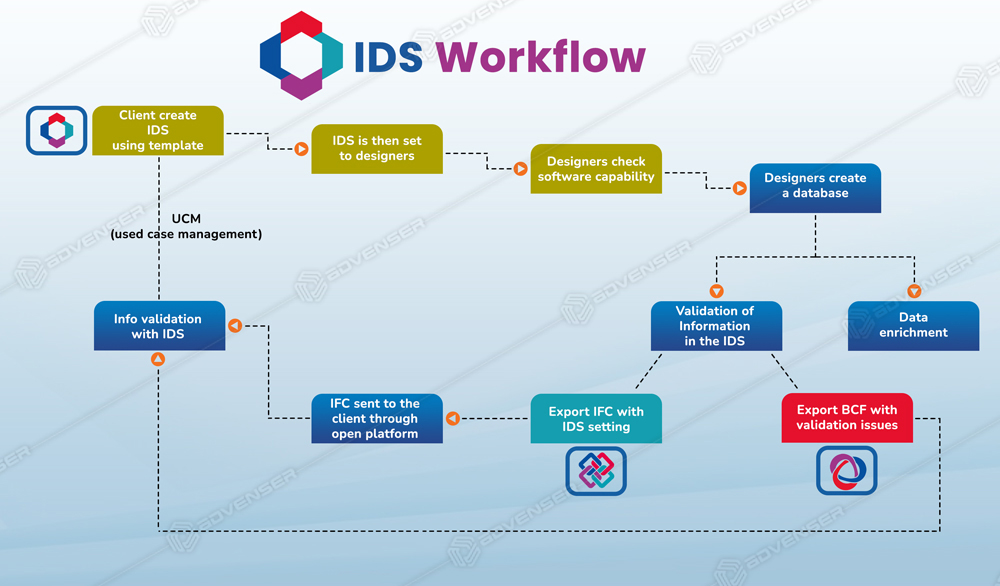The construction industry is evolving unprecedentedly, driven by innovation, technology, and a global push for sustainability. Amidst this transformation, the adoption of Building Information Modeling (BIM) has emerged as a cornerstone for modern construction projects, offering a digital representation of the physical and functional characteristics of places. However, with the adoption of BIM, the need for standardization becomes paramount to ensuring consistency, efficiency, and interoperability across the global construction sector. This is where ISO 19650 comes into play, serving as a beacon of standardization for BIM practices worldwide.

Understanding BIM Standards
BIM Standards are essential guidelines that provide a framework for implementing Building Information Modeling effectively and uniformly across construction projects. These standards are not just technical specifications but encapsulate best practices, methodologies, and procedures to harness the full potential of BIM. The significance of BIM Standards lies in their ability to bridge gaps between different stakeholders in the construction process, including architects, engineers, contractors, and clients, facilitating seamless collaboration and communication.
What is ISO 19650?
ISO 19650, titled “Organization and digitization of information about buildings and civil engineering works, including building information modeling (BIM)—information management using building information modeling,” is an international standard that provides a structured process and framework for managing information over the life cycle of a built asset using BIM. It emphasizes the importance of managing both the digital representation of physical and functional characteristics and the supporting documentation. This standard is designed to be applicable to all stakeholders involved in the construction process, offering guidance on creating, distributing, and using building information models.
The history and development of ISO 19650
The journey of ISO 19650 began with the recognition of the need for a global standard to streamline BIM processes and ensure compatibility across borders. Prior to ISO 19650, several countries and regions had developed their own BIM standards and protocols, such as the UK’s PAS 1192 series. The development of ISO 19650 was a collaborative effort involving experts from the construction industry worldwide, aiming to harmonize BIM practices and provide a common language and process for all. This standard is a testament to the global construction industry’s commitment to embracing digital transformation and enhancing collaboration, efficiency, and sustainability in building projects.
Development Timeline
Origins in British Standards (BS 1192 and PAS 1192):
- The development of ISO 19650 can be traced back to British Standards (BS) 1192 and Publicly Available Specification (PAS) 1192 series.
- BS 1192 was initially published in 1990 and provided guidance on the structuring and exchanging of construction information.
PAS 1192 Series:
- PAS 1192 series (Parts 1 to 5) was developed by the British Standards Institution (BSI) in collaboration with industry stakeholders and government bodies.
- PAS 1192-2, in particular, focused on the information management requirements for construction projects’ capital/delivery phase using BIM.
ISO 19650:
- In 2018, PAS 1192-2 was fast-tracked to become an ISO standard, resulting in the publication of ISO 19650-1 and ISO 19650-2.
- ISO 19650-1: Concepts and Principles (Part 1) provides an overview of information management using BIM and establishes the framework for managing information.
- ISO 19650-2: The delivery phase of assets (Part 2) specifies requirements for the organization and digitization of information about buildings and civil engineering works.
Key Principles of ISO 19650
ISO 19650 is built on several key principles designed to optimize the management and usage of information in BIM. These principles include the need for clear information requirements, establishing specific roles and responsibilities for information management, using standardized information structures, and implementing effective and secure information exchange methods. By adhering to these principles, stakeholders in construction projects can ensure that information is accurate, accessible, and actionable, thereby enhancing decision-making and project outcomes.
Clear and Common Objectives
ISO 19650 emphasizes the significance of setting clear objectives for information management across all project stakeholders, outlining the purpose, desired outcomes, and roles and responsibilities.
Collaborative Working
The standard encourages transparent and cooperative sharing of information, knowledge, and expertise among project participants to achieve common goals.
Information Management Plan
ISO 19650 enables for the creation and execution of an Information Management Plan (IMP) for each project, defining processes, procedures, and protocols for managing information throughout the asset lifecycle.
Information Quality
ISO 19650 emphasizes the significance of quality information in BIM processes, requiring accuracy, reliability, and completeness of information exchanged between stakeholders for informed decision-making.
Defined Responsibility and Competence
ISO 19650 emphasizes the significance of setting clear objectives for information management across all project stakeholders, outlining the purpose, desired outcomes, and roles and responsibilities.
Security and Integrity
ISO 19650 prioritizes information security and integrity in BIM processes, implementing measures to protect sensitive data, prevent unauthorized access, and maintain information integrity throughout its lifecycle.
Lifecycle Perspective
ISO 19650 uses a lifecycle approach to manage information from project inception to decommissioning, ensuring relevance and usefulness at each stage of the asset’s lifecycle.
Continuous Improvement
The standard promotes a culture of continuous improvement in information management practices, encouraging project teams to review and refine their processes based on lessons learned, technological advancements, and stakeholder feedback.
Compliance and Governance
ISO 19650 emphasizes legal, contractual, and regulatory compliance in information management and emphasizes effective governance frameworks for overseeing and monitoring organizational activities.
Understanding the importance of ISO 19650 in the construction industry
The adoption of ISO 19650 represents a significant milestone in the construction industry’s journey towards digitalization. This standard is crucial for several reasons. Firstly, it provides a common framework that facilitates international collaboration, allowing stakeholders from different countries to work together more effectively on construction projects. Secondly, ISO 19650 helps to reduce the risk of misinterpretation and errors by standardizing the way information is managed and communicated. Finally, by promoting the efficient use of Building Information Modeling (BIM), ISO 19650 contributes to the construction industry’s sustainability goals, enabling more informed decisions that can lead to reduced waste and more efficient use of resources.
The benefits of implementing ISO 19650
The implementation of ISO 19650 offers a multitude of benefits for all parties involved in construction projects. For project owners and clients, it ensures that their requirements are clearly defined and met throughout the project lifecycle. Architects, engineers, and contractors benefit from streamlined workflows, reduced rework, and enhanced collaboration. Project owners can also determine their capability for ISO 19650 compliance by conducting a compliance audit for ISO 19650. These services assess an organization’s readiness and provide insights into necessary improvements, ensuring a smooth transition and successful implementation of ISO 19650 standards.
Furthermore, ISO 19650 facilitates the integration of new technologies and processes, such as artificial intelligence and machine learning, into construction projects, thereby driving innovation and improving project outcomes. Overall, the adoption of ISO 19650 leads to higher-quality buildings, reduced costs, and shorter project timelines.
ISO 19650 vs. other BIM standards
While ISO 19650 is a comprehensive and widely adopted BIM standard, it is not the only one in existence. Various countries and regions have developed their own BIM standards tailored to their specific needs and contexts. However, ISO 19650 distinguishes itself by providing a global framework that is adaptable and applicable across different jurisdictions. Its development was influenced by existing standards and practices, incorporating the best aspects of these into a cohesive international standard. By doing so, ISO 19650 facilitates greater interoperability and consistency in BIM practices worldwide, unlike other standards that may only have regional applicability.
Conclusion: The future of ISO 19650 and its impact on the construction industry
The future of ISO 19650 looks promising, with its adoption set to become increasingly widespread across the global construction industry. As digital technologies continue to evolve, ISO 19650 will play a crucial role in ensuring that BIM practices can adapt and integrate these innovations effectively. The impact of ISO 19650 on the construction industry cannot be overstated; it is paving the way for a more collaborative, efficient, and sustainable future. By embracing ISO 19650, industry stakeholders are not just adopting a standard; they are participating in a movement towards a digitally transformed future of construction that benefits everyone involved, from project inception to asset management.
In conclusion, ISO 19650 is a crucial standard for BIM practices in the construction industry, offering a comprehensive guide for efficiency, consistency, and collaboration. With a global perspective and detailed guidance, it is an indispensable resource for all stakeholders. As the industry moves towards a more digitalized future, ISO 19650’s principles and practices will shape this evolution, ensuring the industry can tackle challenges head-on.






